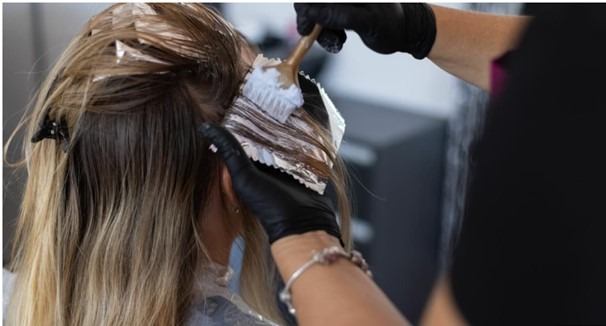Human hair extensions are pivotal in enhancing one’s appearance and confidence in beauty and personal care. But beyond the surface-level aesthetic improvements, there’s a fascinating science and history behind these beauty enhancers. This exploration of where hair extensions come from, what is hair made of, and their transformative impact on individuals experiencing alopecia.
Origins and Sources
Before reaching salons and stylists globally, hair extensions begin their journey. “Where do hair extensions come from?” shows a worldwide hair supply network. The complex procedure involves collecting, classifying, and treating hair to ensure quality and sanitation. This hair converts washing, colouring, and conditioning into natural-looking extensions.
The Composition of Hair
One must understand hair composition to enjoy hair extensions. Human hair is mostly keratin. Long chains of this protein compose the hair shaft. Hair’s protein-based composition makes it suitable for extensions due to its durability and adaptability. Keratin’s inherent characteristics make hair extensions resilient and flexible and endure style, heat, and environmental influences.
Enhancement and Transformation
Hair extensions offer more than just length and volume; they are a means of transformation and self-expression. For individuals looking for a change or enhancement, extensions provide a reversible and non-committal way to experiment with looks. The beauty of these extensions lies in their ability to be styled, coloured, and treated just like natural hair, opening up endless possibilities for personalization and creativity.
A Beacon of Hope for Alopecia Sufferers
Hair extensions hold a special significance for individuals suffering from alopecia. This condition leads to hair loss and can profoundly affect self-esteem and identity. “Hair extensions for alopecia” are not just cosmetic additions; they offer a semblance of normalcy and confidence to those affected. The careful selection and application of hair extensions can create natural-looking hair, helping individuals with alopecia feel more comfortable and confident in their appearance.
Sustainability and Ethical Considerations
As the demand for human hair extensions grows, so does the conversation around sustainability and ethical sourcing. Ensuring that the hair is sourced in a manner that respects the donors and the environment is paramount. The industry is moving towards more transparent practices, ensuring that those who donate their hair are compensated fairly and that the processes involved minimize environmental impact.

The Process Behind Creating Extensions
- Collection and Sorting: The initial stage involves collecting hair from donors, followed by a meticulous sorting process to ensure uniformity in length and quality.
- Treatment and Preparation: The hair is then treated and possibly dyed to match a broad spectrum of natural hair colours. This process also includes sanitization and conditioning.
- Wefting and Styling: Hair is sewn into wefts or prepared into different styles of extensions, such as clip-ins or tape-ins, ready to be applied to the wearer’s hair.
Innovation and Technology
The field of hair extensions is ever-evolving, with innovations in application techniques and hair treatment processes. Technologies that preserve the hair’s natural look and feel while ensuring the longevity of the extensions are continually being developed. This progress allows for more indistinguishable extensions from natural hair, enhancing comfort and wearability.
Human hair extensions are a beauty accessory and a blend of science, history, and art that enhances personal appearance and confidence. Oddel offers a vast selection of high-quality hair extensions, ensuring everyone can find their perfect match and feel beautiful. This fascinating world combines cultural practices, ethical sourcing, and technological advancements to meet diverse needs and preferences, making it easier than ever to achieve the desired look.



